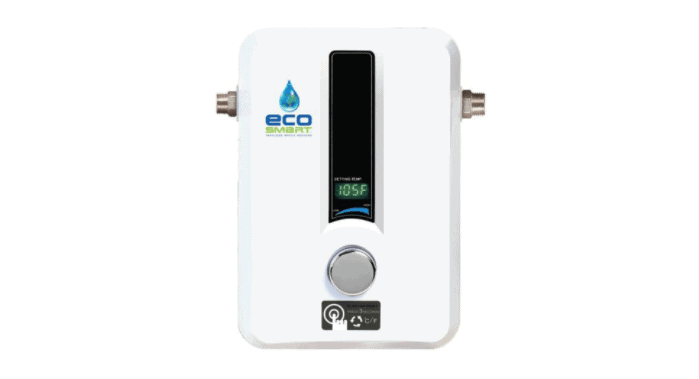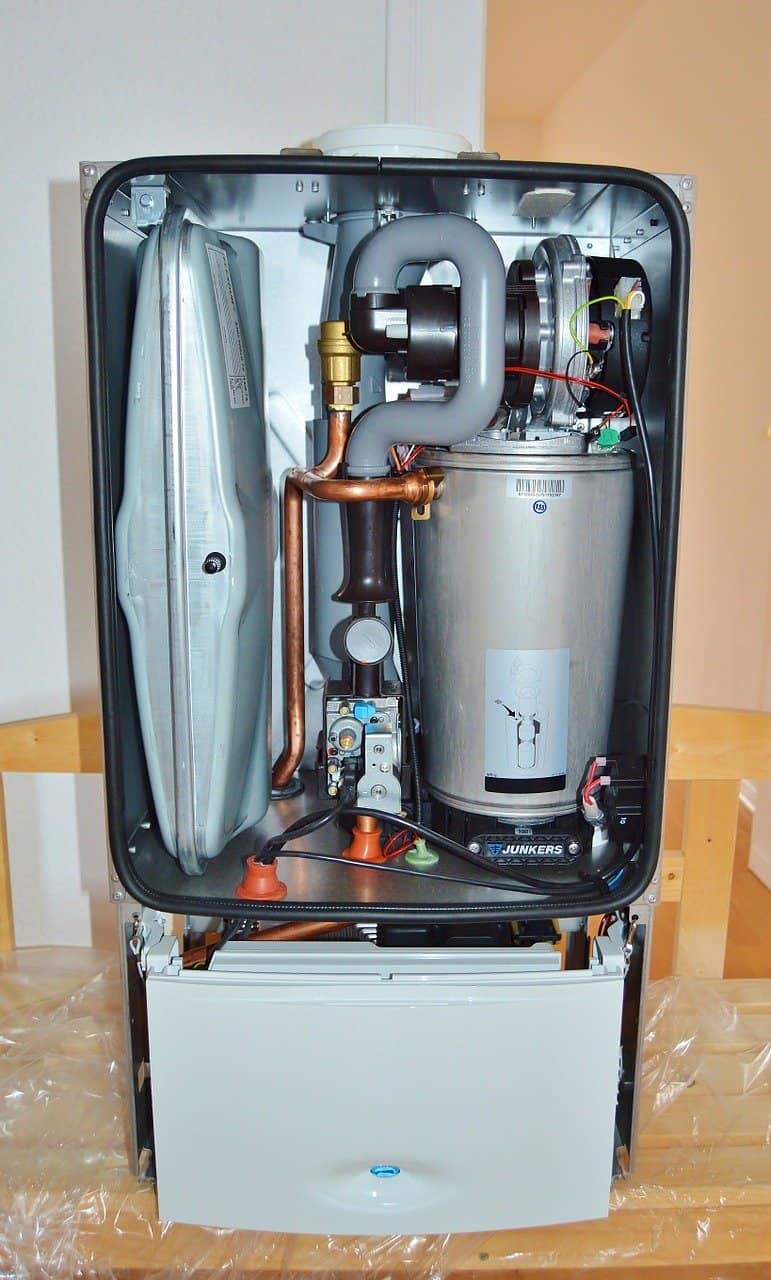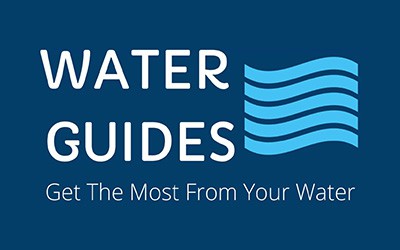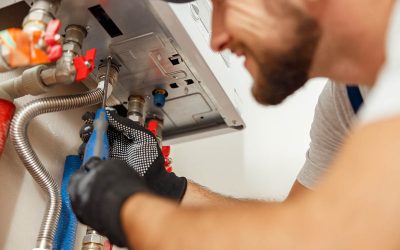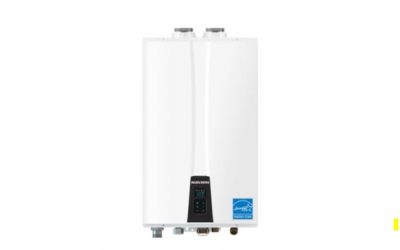Electric, gas, and tankless water heater temperatures are usually set at the factory. The good news is that you can adjust them to suit your preferences within a few minutes. However, you should note that adjusting your water heater temperatures too high could lead to severe consequences, like scalding. In addition to burns from scalding temps, higher water heater temperatures will lead to escalating utility bills.
On the other hand, lowering the temperatures to certain levels can lead to bacteria build up and ultimately, infection. The most important thing is to strike a balance between a temperature that is neither too high nor too low. Below, we provide our recommendation on how to strike this balance to find out what is the the best temperature for a hot water heater.
Contents
Best Temperature for Water Heater
Our recommended water heater temperature is anywhere within a range of 123°-140° Fahrenheit. Setting the temperature dial on the lower end of this range will help you save cash by reducing the energy required to heat your water. While, opting for higher temperatures is preferred by those who like to take really hot showers, or have concerns about bacterial growth.
OSHA vs EPA Water Heater Recommendations
OSHA states water heater temperatures should be set at 140 degrees. Additionally, they state water should reach the furthest faucet, shower, or other water appliance at a temperature above 122° F. This ensures the bacteria Legionella pneumophila doesn’t have an environment that supports its growth. Consumption of water tainted with L pneumophila can and has led to deadly outbreaks of pneumonia. Setting your water heater temperature at 140° F will minimize the opportunity for bacteria like L pneumophila to grow. However, as previously mentioned, it will increase the likelihood of getting burned by scalding hot water.
On the other hand, the Environmental Protection Agency (EPA) recommends 120 degrees, to minimize power consumption. In fact, they state you can save up to $461 annually when reducing your water temperature to this level. Which temperature between 123°-140° Fahrenheit to choose for you and your family is a matter of personal preference.
How to Find the Best Temperature for Your Water Heater?
If you have small children, then erring on the low end of the recommended water heater temperature range might be your best bet. This tactic minimizes the chance of an accidental burn. On the other hand, if you want to prioritize a clean and highly sanitized household, then you can adjust your water heater temperature closer to 140 degrees. This is a good solution for households with family members who have a compromised immune system.
So, all this discussion and you’re still not sure what is the best temperature for your hot water heater? Well, setting your water heater to 130 degrees could provide just the right balance. The water will be hot enough for sanitation purposes but low enough to reduce the chances of any family burns.
How to Check Water Heater Temperature
Most water heaters on the market today lack a temperature gauge. Instead, they are fitted with a thermostat that only indicates heating temperature ranges. To determine the water heater temperature, you just need a cooking thermometer and a cup. For best results, allow your water heater to remain idle for at least one hour. After the lapse of 60 minutes, turn on any faucet close to the water heater. Allow water to flow for at least one minute, while ensuring it is at maximum temperature. Let it fill the cup and then insert a thermometer. Adjust the temperatures as desired.
Note: before using your thermometer, we recommend putting it into ice water until it reaches 32 degrees (or its lowest setting). This process helps reset the thermometer to ensure your measurement is as accurate as possible.
Adjusting Water Heater Temp
If your water heater is not delivering water at your preferred temperature, then you simply need to adjust it. You’ll likely only need common tools like a socket, small wrench, and/or a screwdriver. As a reminder, manufacturers typically set the temperature for most models. Deviate from this setting only once you’re comfortable with the pros and cons, like those detailed above.
How to Adjust Electric Water Heater Temperature
First, you should turn off any power to the unit, typically done at the circuit breaker. Next, determine where your thermostats are located. Typically there are two (potentially only 1 on smaller units) thermostats located behind an access panel.
Then, proceed to remove the necessary access panel(s). Here you should find the thermostat adjustment [potentially under some insulation]. Using your screwdriver, you can adjust the thermostat control towards the direction of your desired temperature and then replace the panels and any insulation. We recommend consulting your manufacturer’s documentation on your unit or contacting them directly before making any adjustment, if you’re not comfortable with this procedure.
Finally, switch back on the power to the unit. Wait 2-4 hours to give your water heater some time to adjust to the new temperatures, and test the water temperature yourself.
How to Adjust Gas Water Heater Temperature
Most gas water heaters come with a setting knob, which you can use to adjust to your preferred temperatures. Sometimes these controls can be located behind an access panel, like electric units. Once you’ve located, you can increase the temperatures by turning the knob towards the ‘hot’ setting and vice versa.
As with electric units, wait for a few hours, then test the temperature. If your unit has a ‘vacation’ setting, then your heater will refrain from heating water altogether.
How to Adjust Tankless Water Heater Temperature
Most tankless water heaters have a readily accessible LED panel from which to adjust the temperature setting. If you’re using a POU (or point of use) tankless water heater, you can comfortably select a temperature setting on the lower end of the spectrum. This is because water has less distance to travel to the exit point (e.g. faucet), and therefore, less opportunity for water to cool to the point at which bacteria could grow.
Legionella Water Temperature
Every year, close to 100 Americans are hospitalized for a type of bacterial infection which can be caused by water heaters. The previously discussed Legionella pneumophila can lead to both Legionnaire’s disease and Pontiac fever.
Legionella attacks the immune system through the respiratory tract, when droplets containing the bacteria are breathed in. This could occur by an act as simple as taking a shower. Those individuals most at risk include smokers (or former smokers), the elderly, anyone with a chronic lung disease, or anyone with a compromised immune system.
Just like other forms of bacteria, Legionella bacteria thrive in stagnant water below 122 degrees Farenheit. Therefore, maintaining your water at high enough temperatures help to prevent the growth of these bacteria, while minimizing the risk of Legionnaire’s disease.
Resolving Hot or Cold Water Spikes
In addition to the above temperature recommendations, we also recommend installing a temperature regulator or thermostatic mixing valve. Doing so, will help to prevent water temperatures from spiking too high or low for safety (scalding) or comfort. These devices are normally installed to the water heater outlet. It will then mix hot and cold water automatically, helping to consistently achieve your desired temperature. This includes resolving the spikes in hot or cold water commonly experienced in the shower, caused by a nearby toilet flush, laundry machine, or dishwasher.
Most temperature regulators are compatible with all water heaters on the market. You can spend upwards of $150 for a high quality thermostatic mixing valve, but we recommend a cheaper alternative from amazon for roughly half the price.
We hope you found this information helpful, but recommend contacting the manufacturer of your water heater or a professional with any further questions, or if you’d like an additional opinion.
